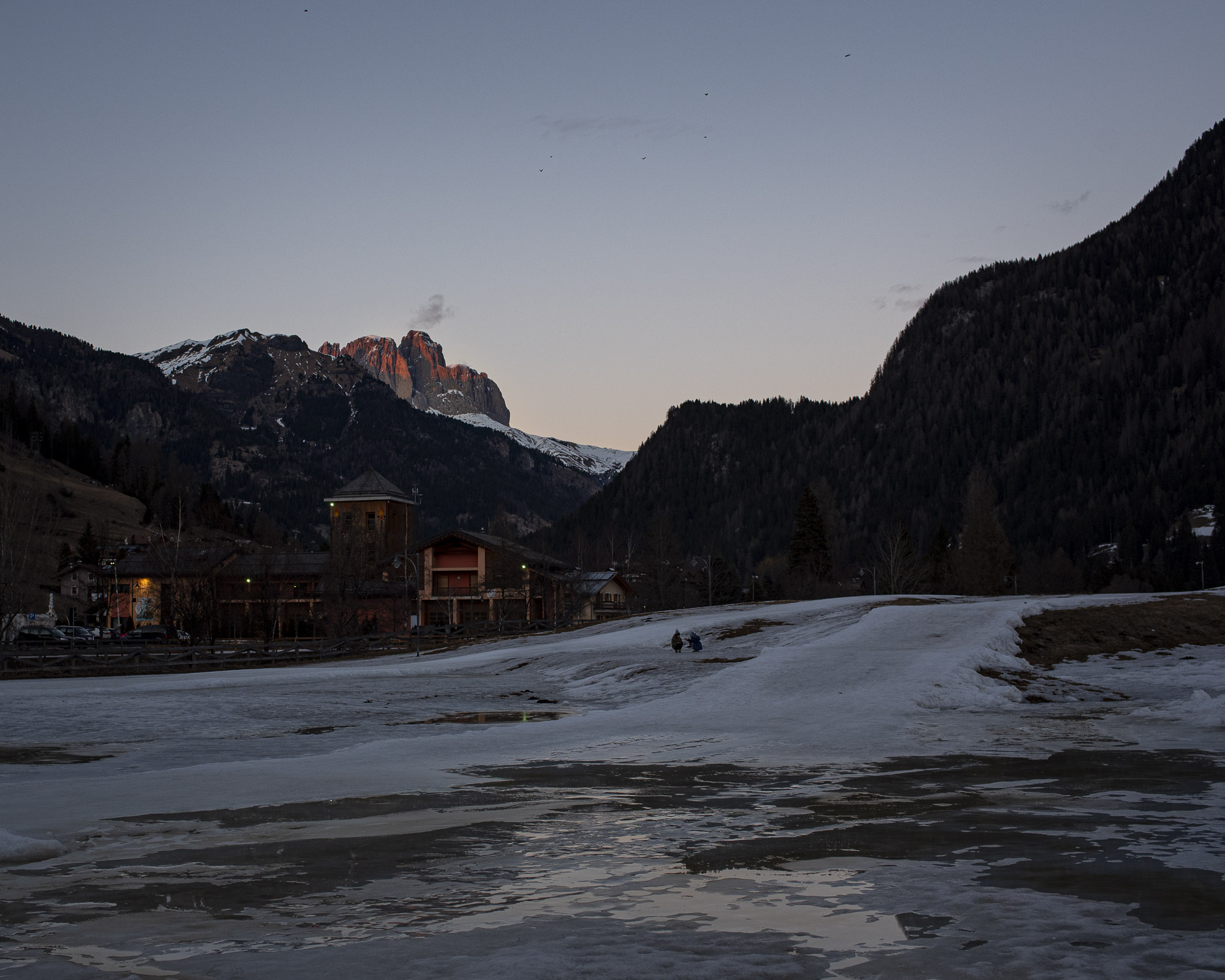

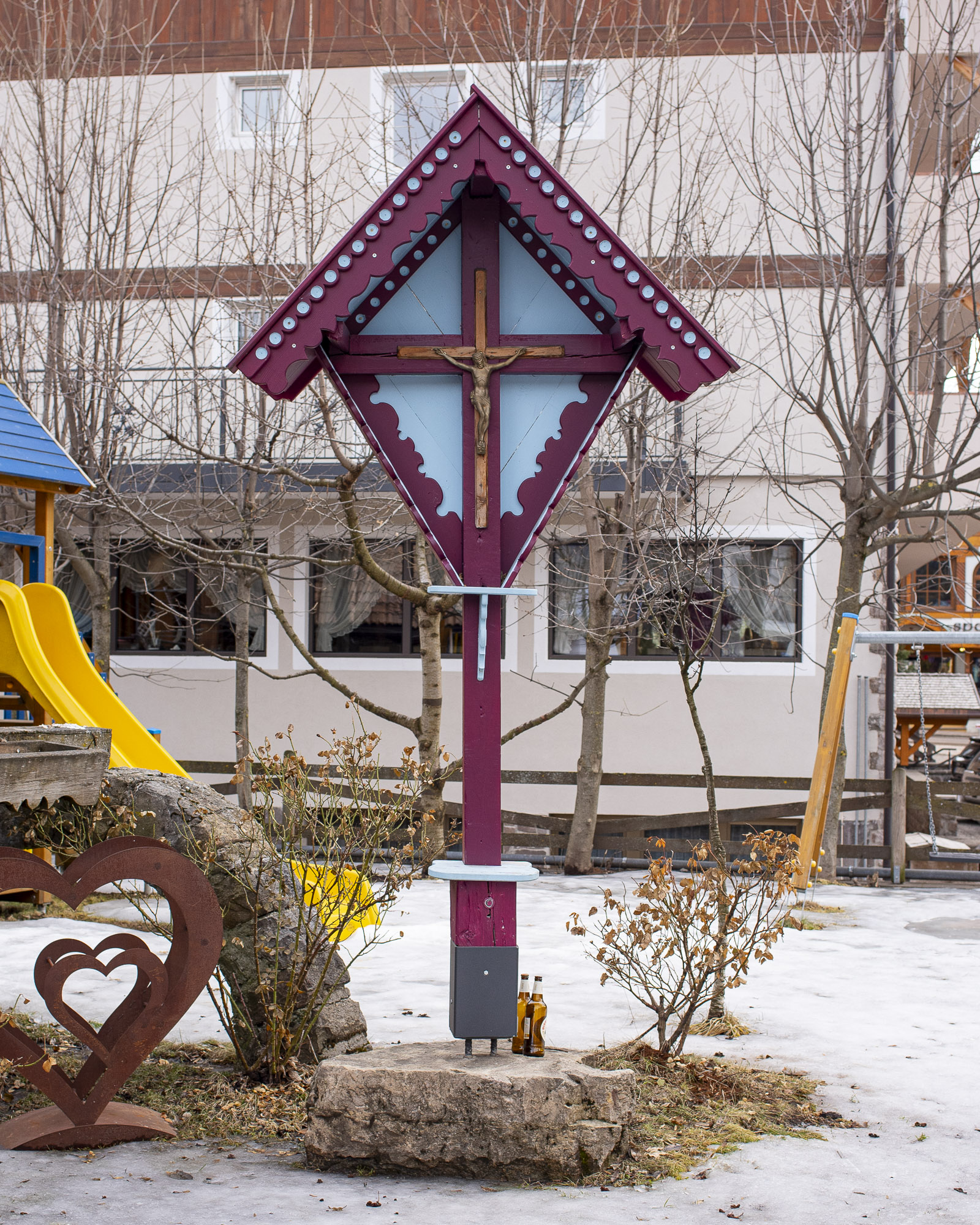
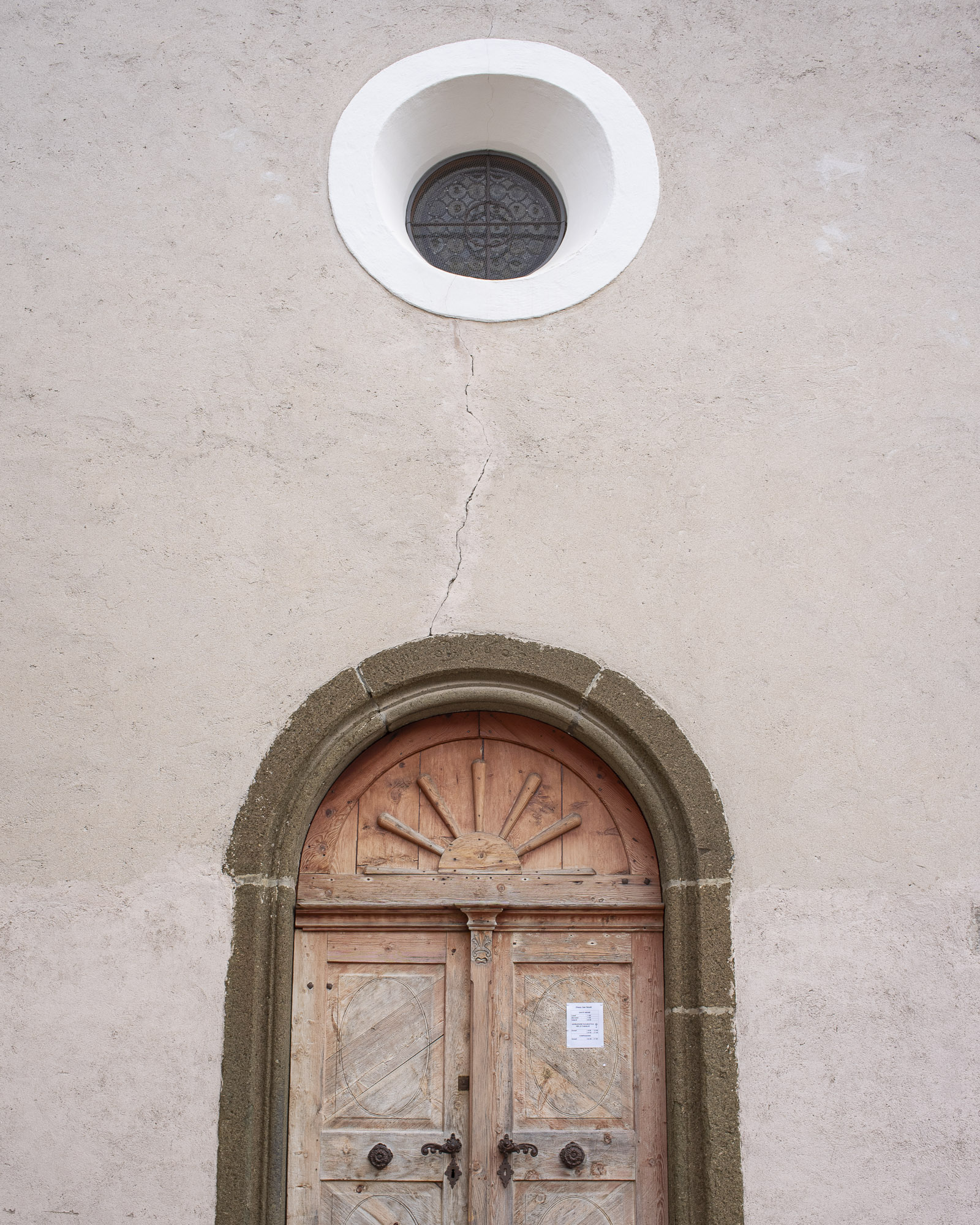
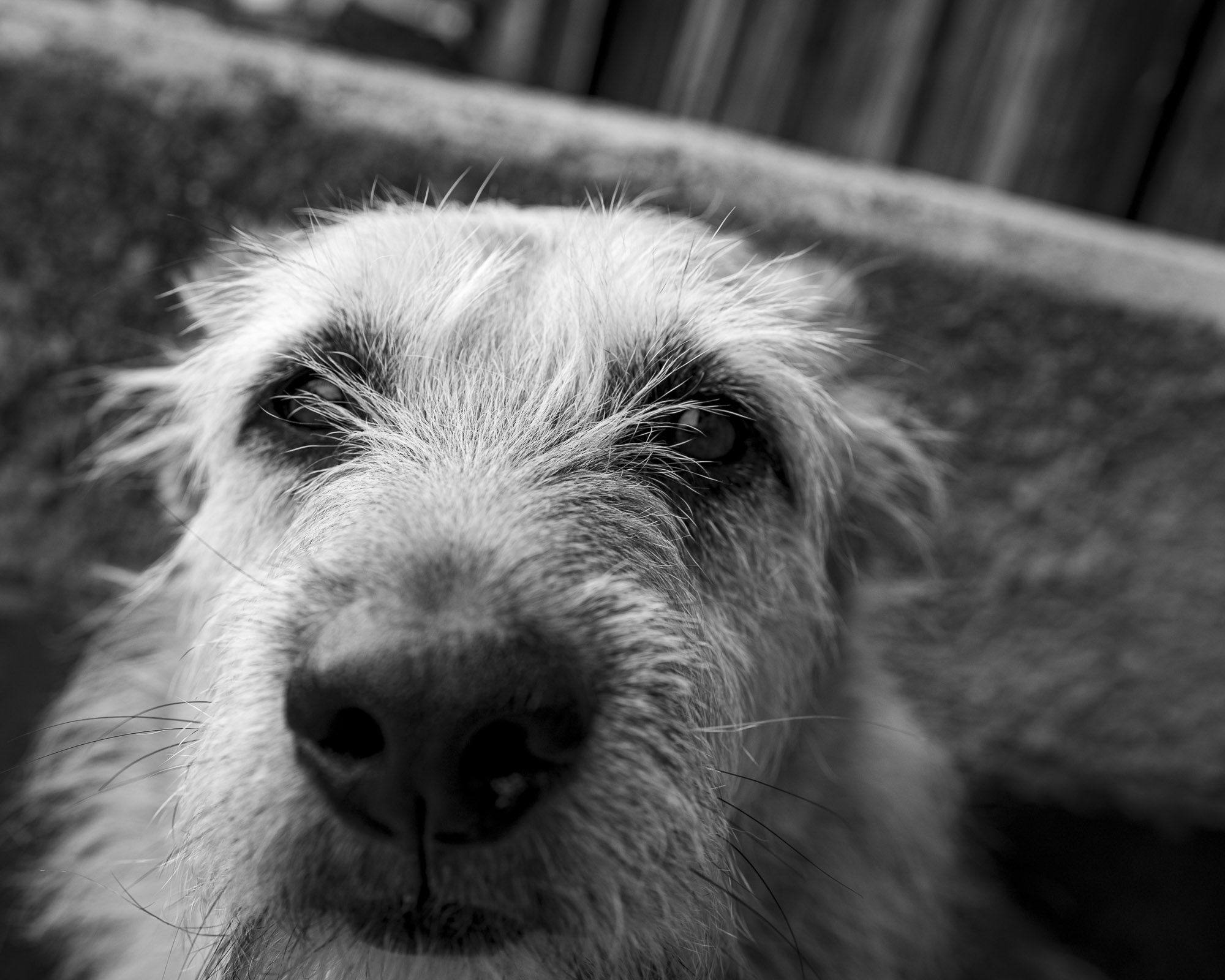
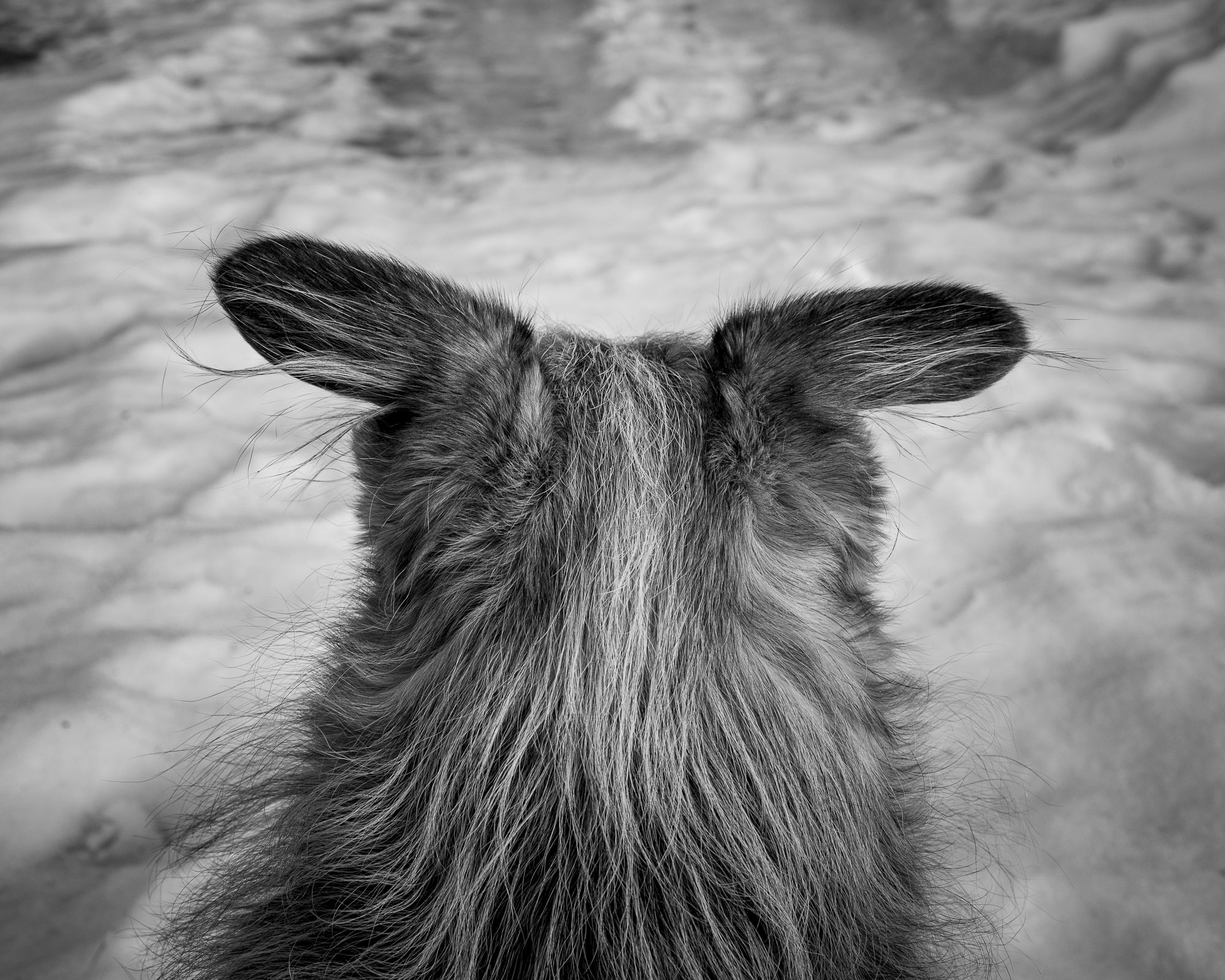
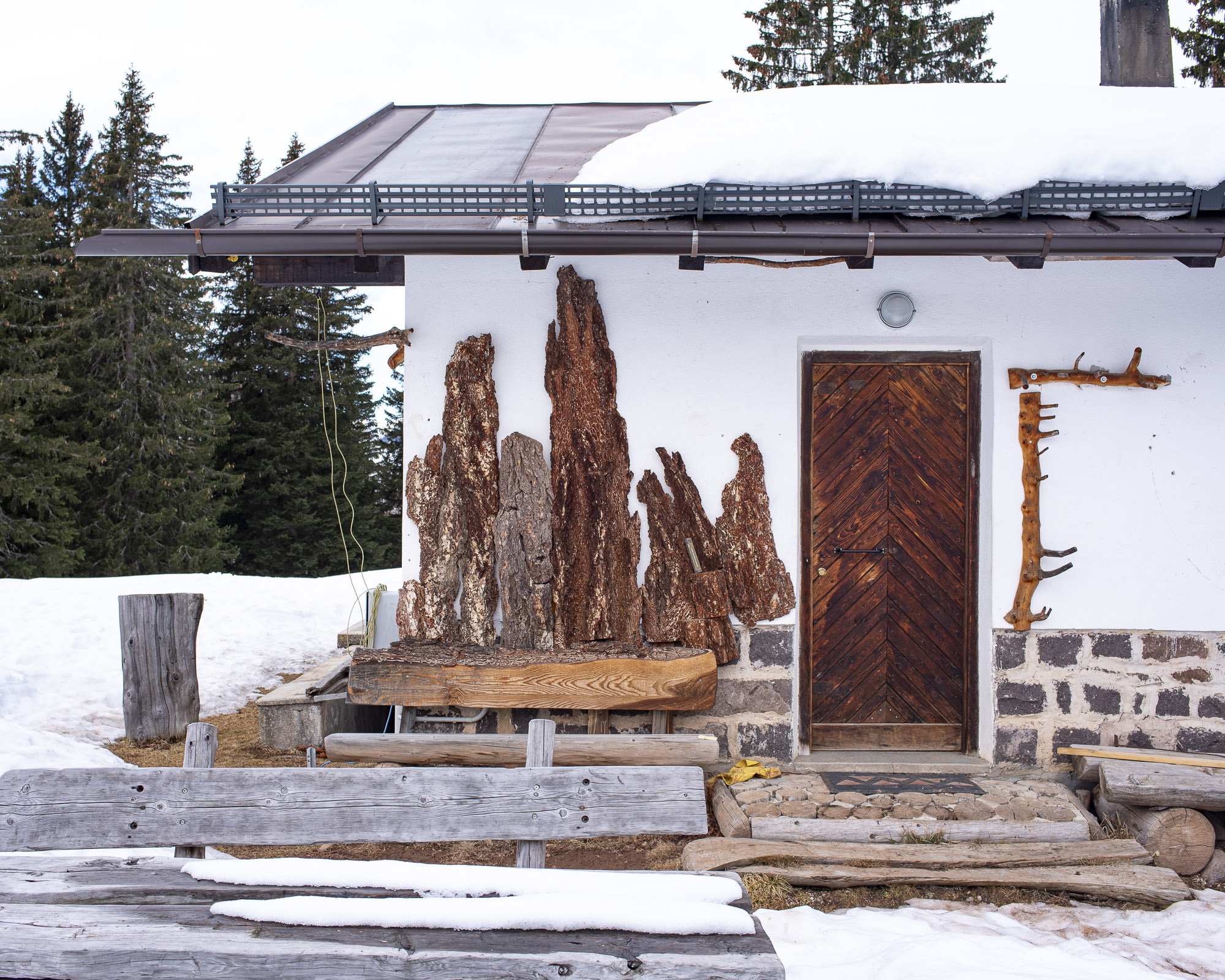
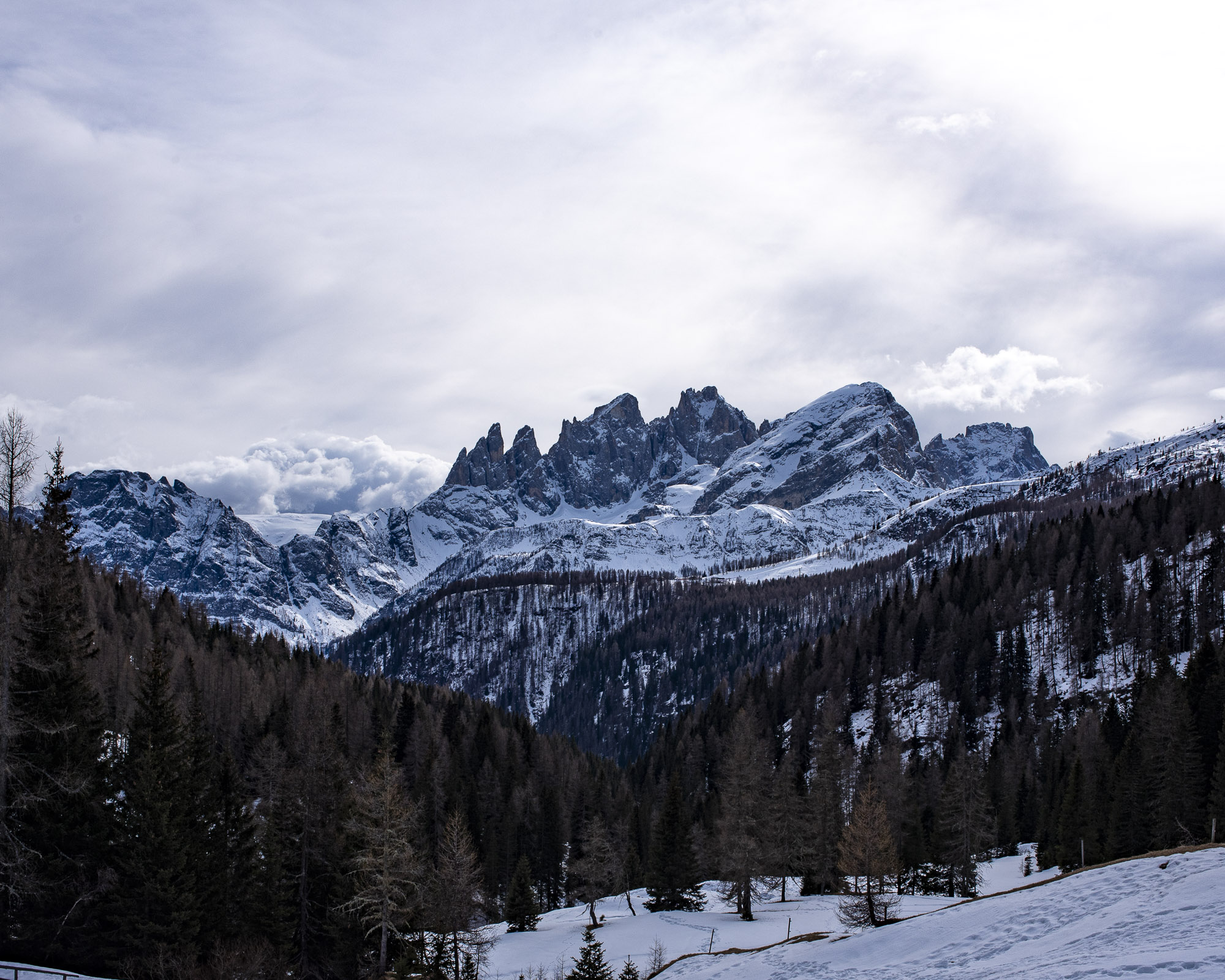

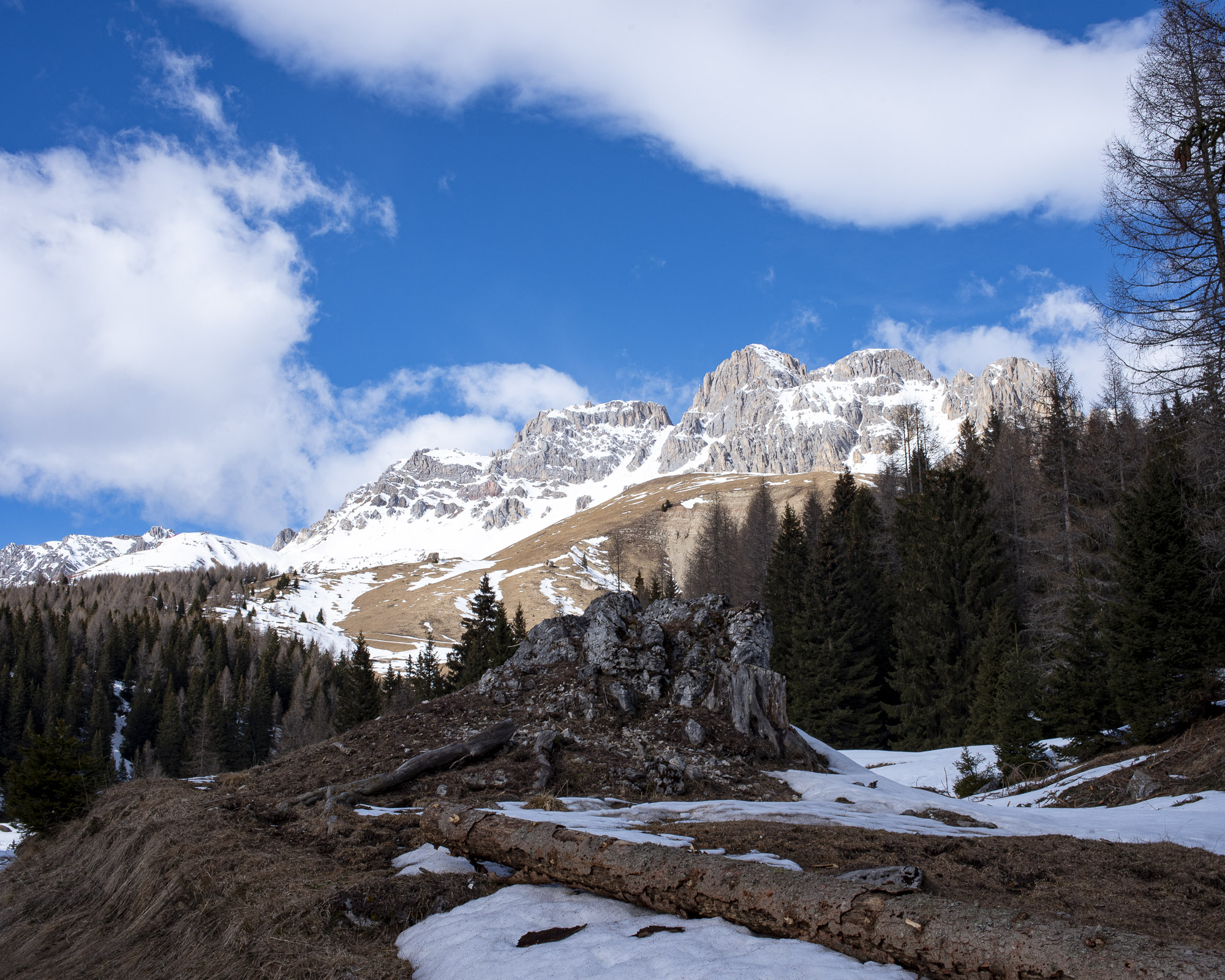
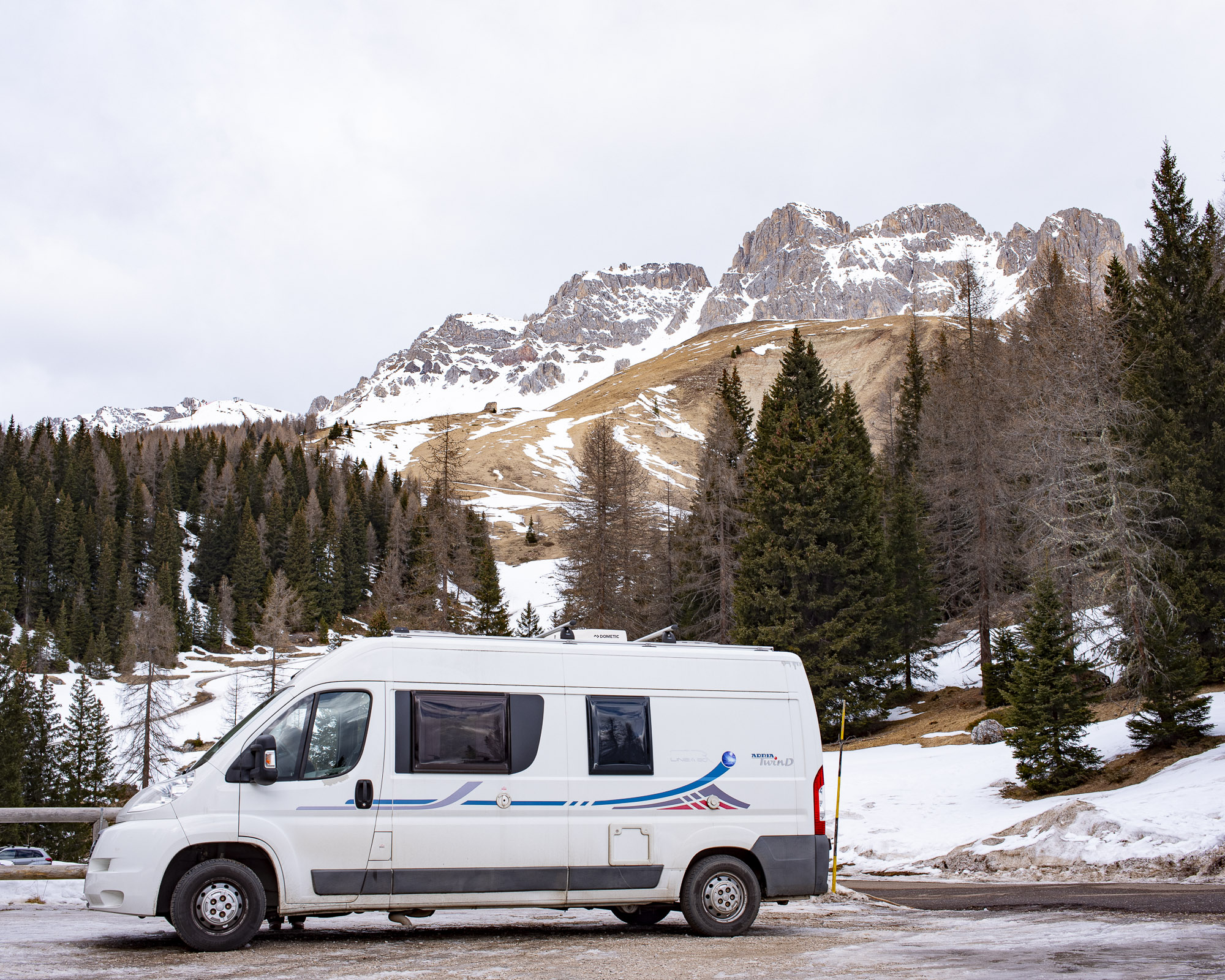
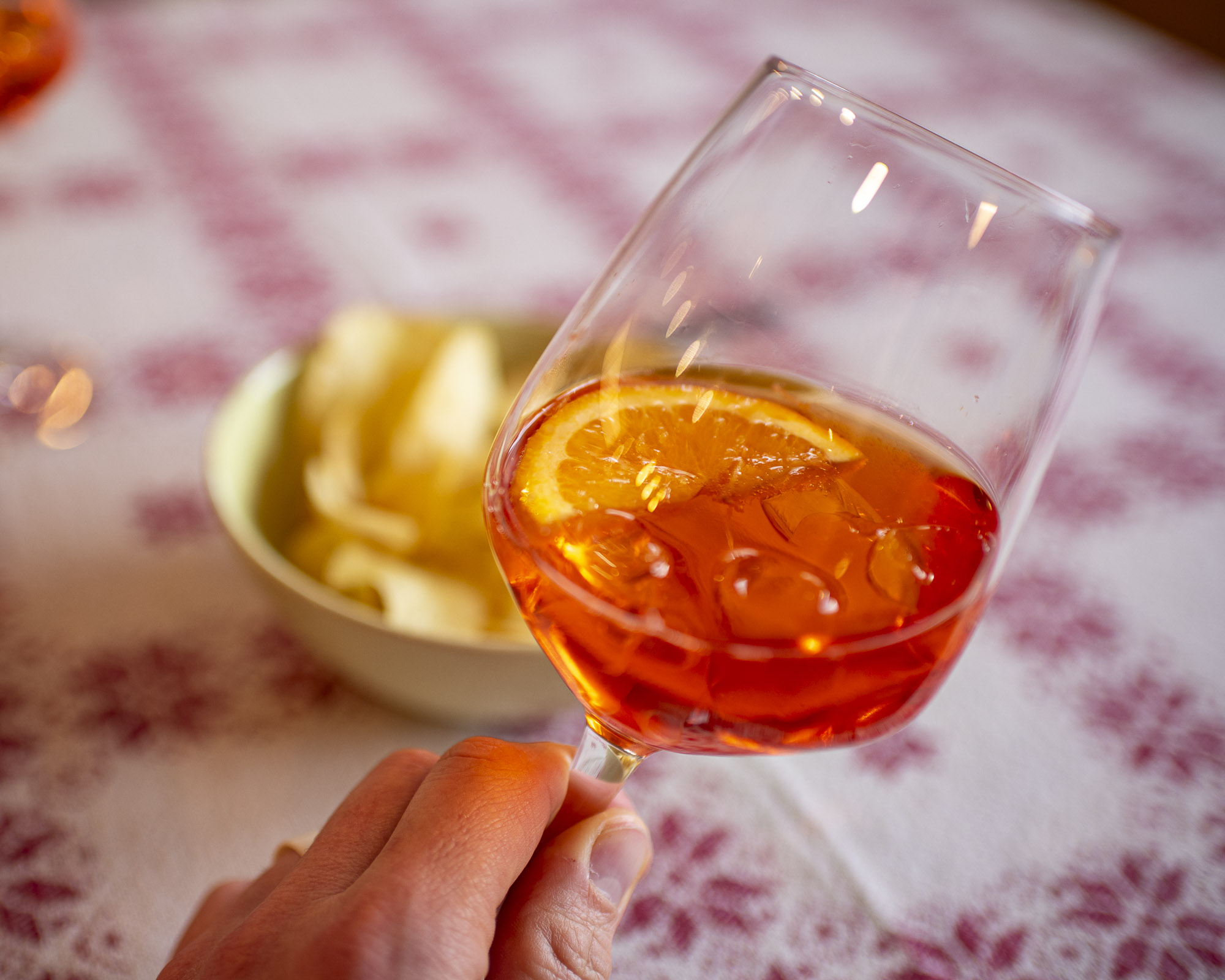

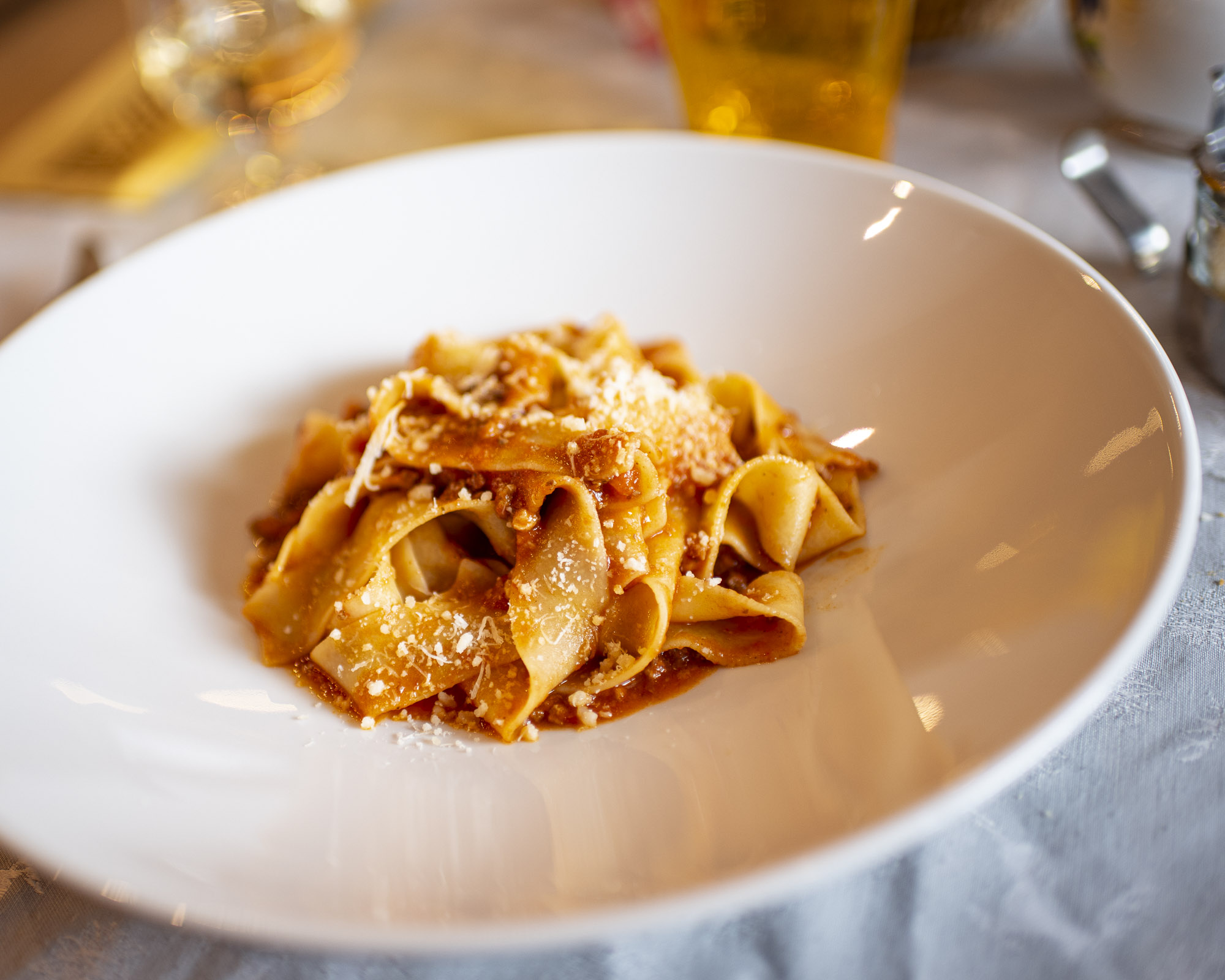
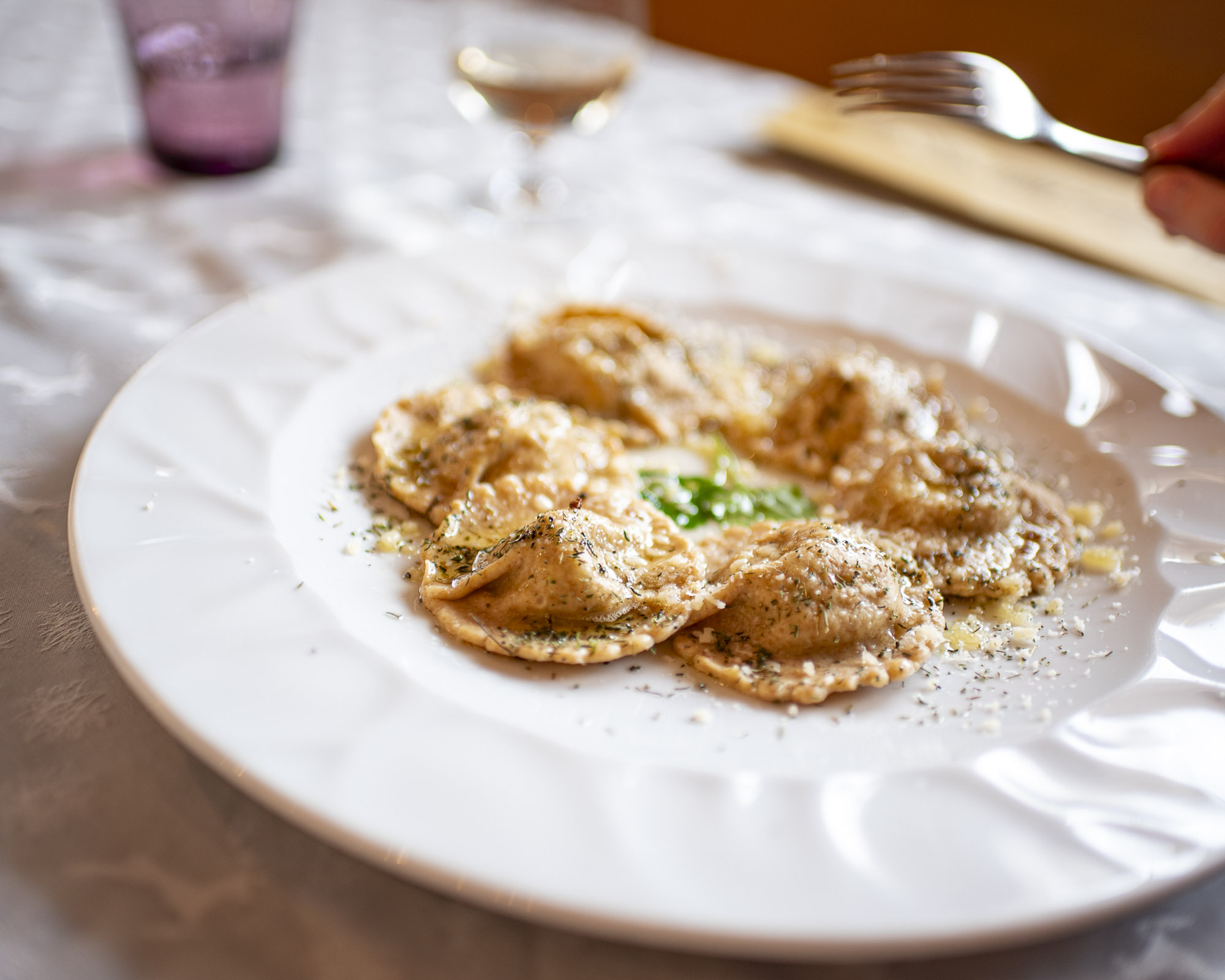
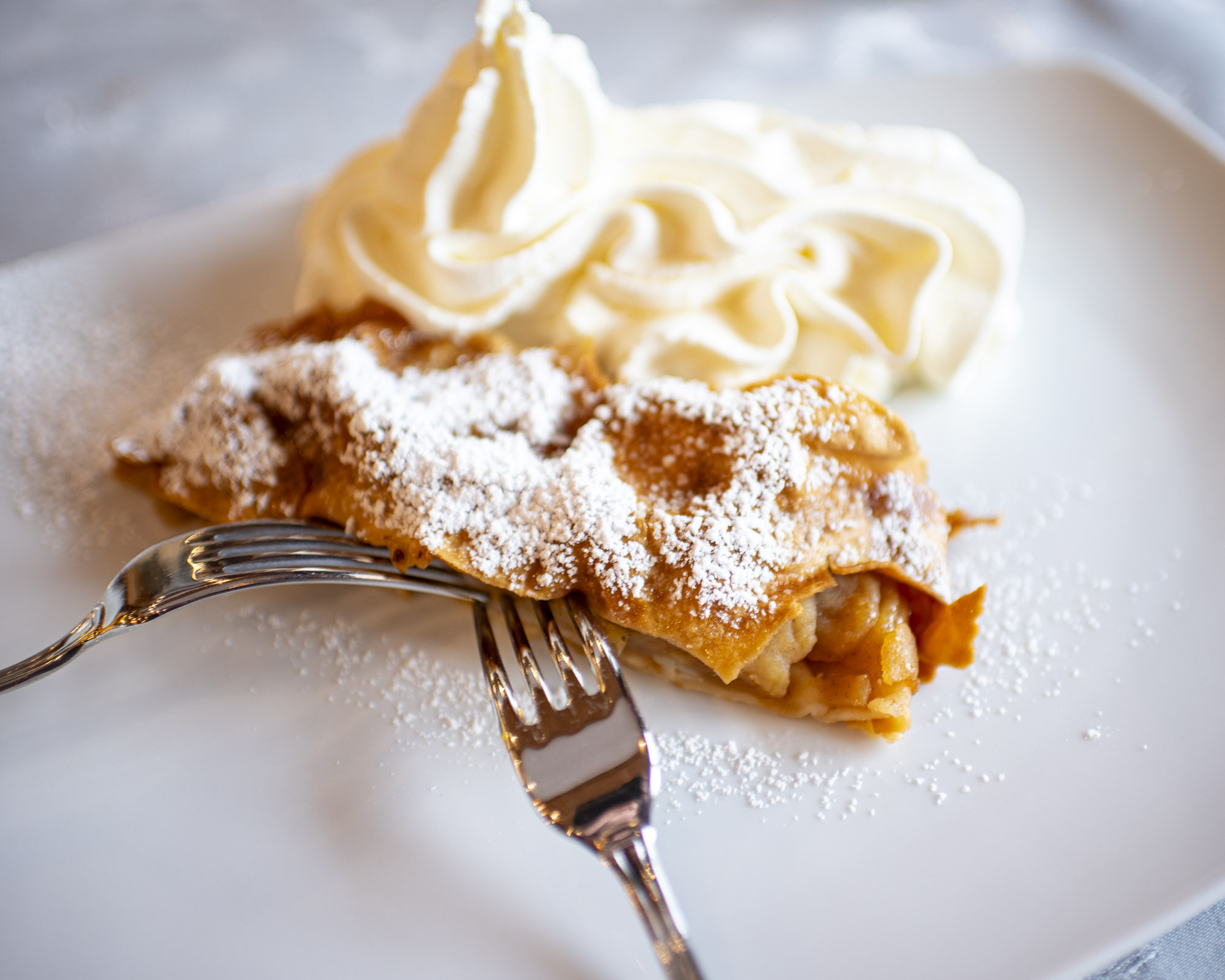
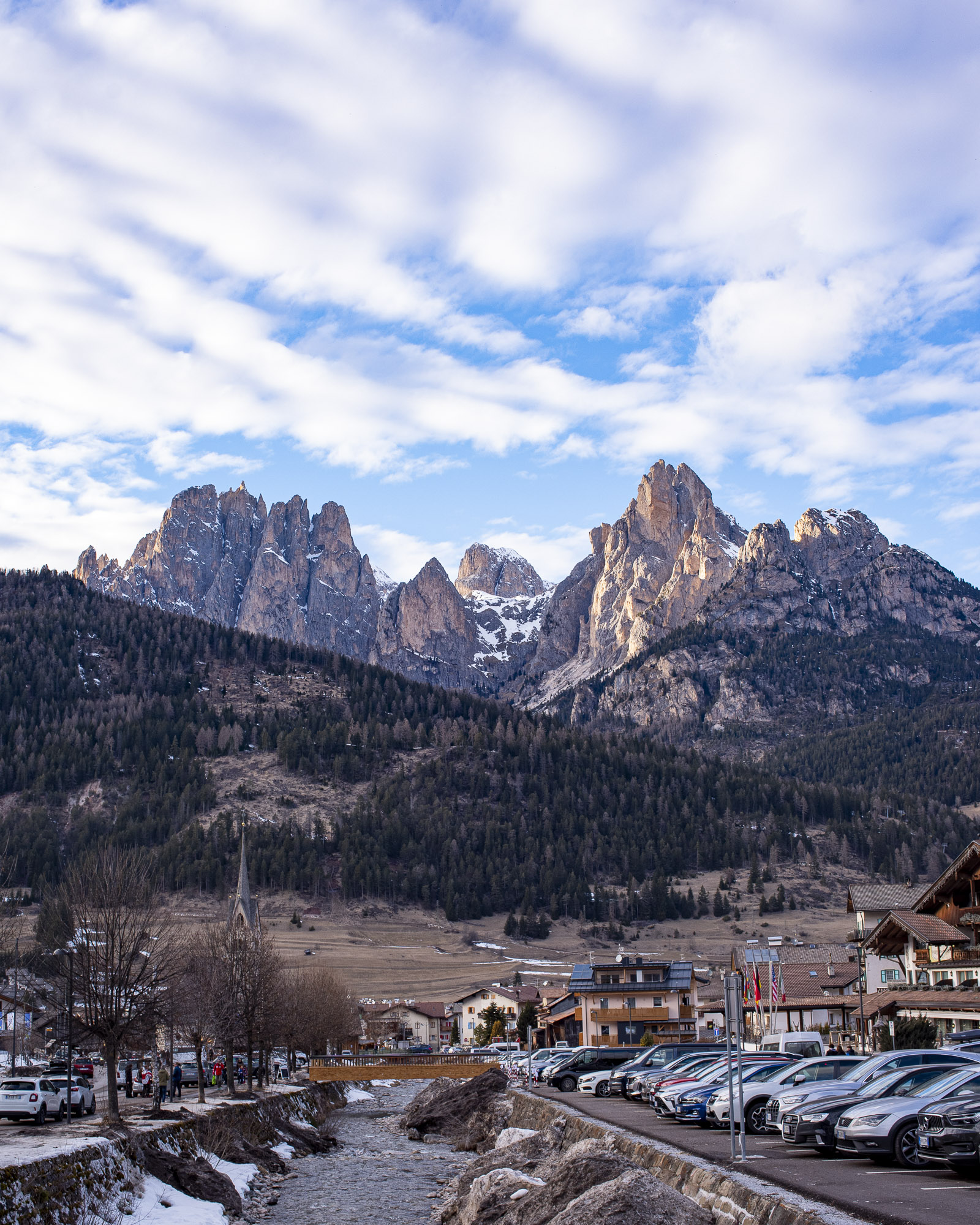
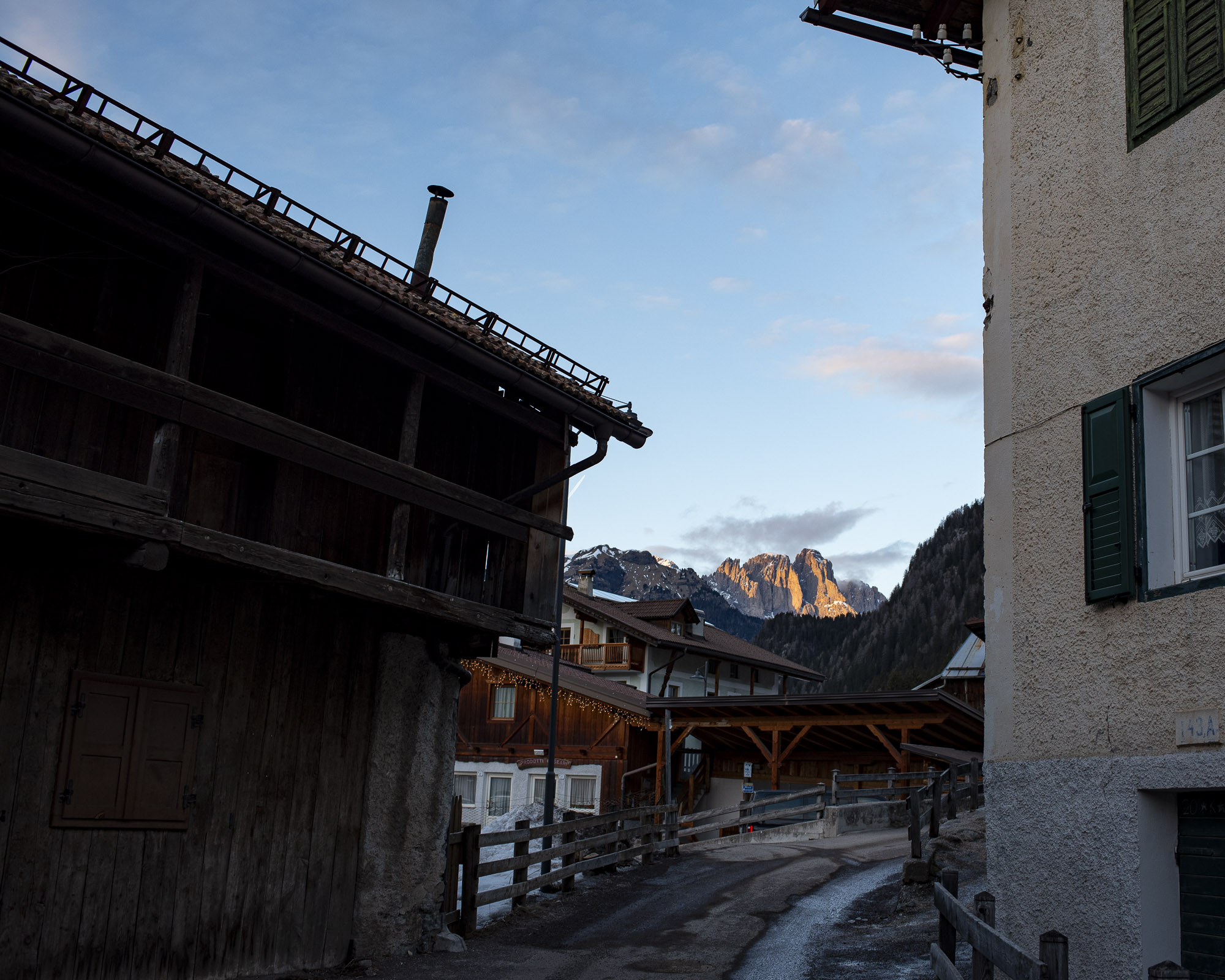
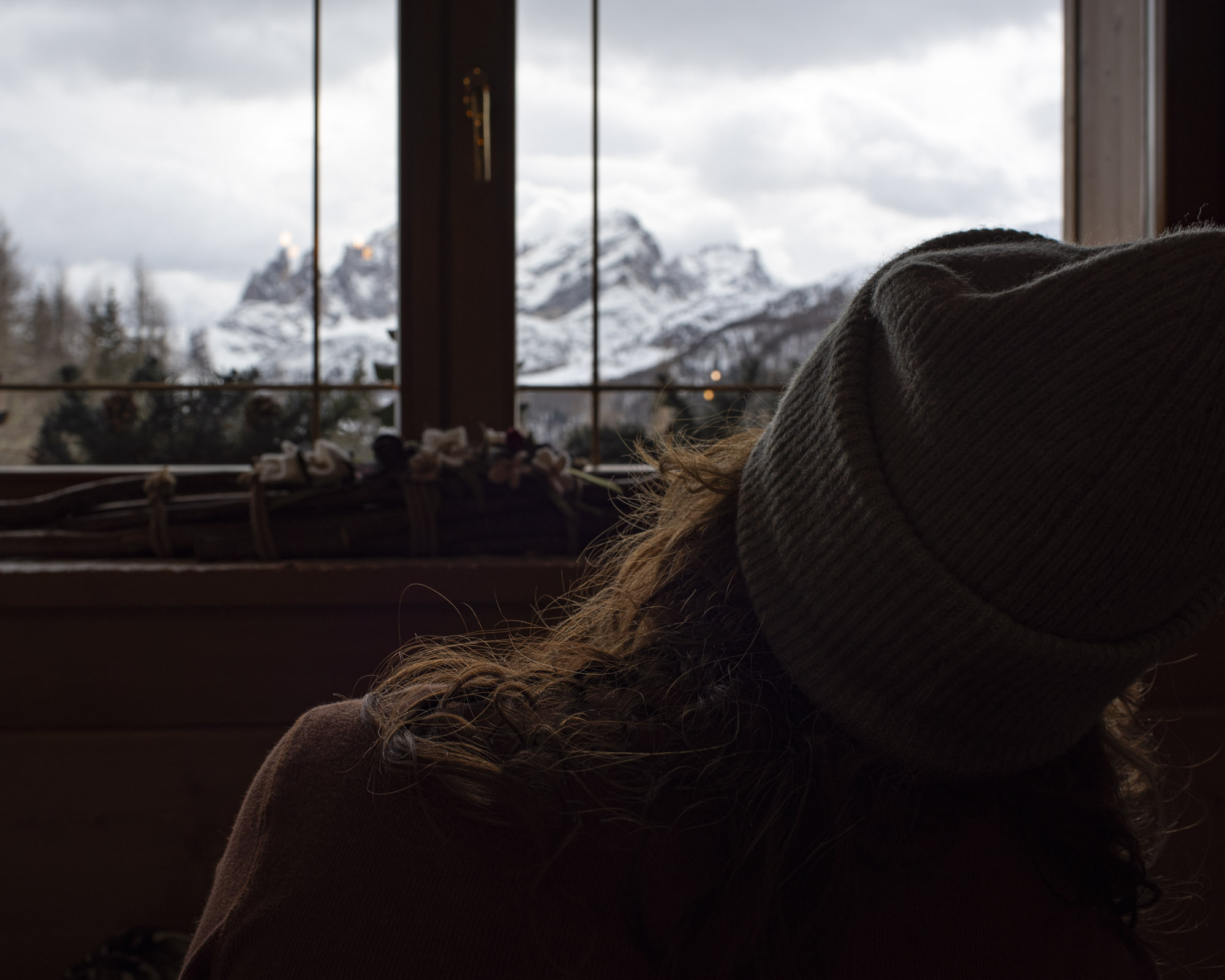
back to digital frames for a bit…
We headed back into the Trento-Alto Adige region in the van last week for a weekend trip. I decided to take the digital SLR for a change after a stint of shooting 35mm film. I have to admit, switching back to digital after awhile without immediate image feedback felt like cheating, but in a good way. Adjusting ISO on the fly and processing raw files felt nice, too 😀. The weather was uncharacteristically warm for February in the mountains, but it was still incredibly beautiful none-the-less. We made a stops at QC Terme in Val di Fassa and Rifugio Flora Alpina. The rifugio is situated in one of our favorite areas in Trento-Alto Adige—just over the border from Veneto. As you can also see, their food is excellent.
I got away from shooting digital for awhile to re-engage with analog processes. My plan is still to shoot more film—and—have an exhibition where I show work created without the aid of a computer—probably screen print + mixed media collaging using wheat paste as a binder. It’s not necessarily a protest against generative Ai, but it is an intentional move to keep my eggs in more than one basket when it comes to making things.
I remember having a conversation with visiting artist, Giles Lyon when I was at the University of Tennessee…the gist of our convo was about paintings or drawings being a more powerful form of art than prints or anything digital. At the time, I argued that any kind of work could have potential impact on an audience regardless of media as long as the context was right. While I still feel that is more or less true (in good and the worst of ways), I think the rise of generative Ai has helped me understand what he was really getting at—in particular with painting. I remember he spoke about laying paintings down in the studio on purpose so they would gather dust and grime from the floor and things that fell on them—so they become sort of a time capsule. He also had a piece where he had literally painted a collection his deceased father’s neck ties into a piece. I’m not really sure where I’m headed with this, but I think the aspect of a piece of art having the ability to literally hold time gives it an authenticity that somehow feels safe from Ai. I was lucky enough to see a collection of Egon Schiele’s work in addition to works from the Vienna Secessionists at the Leopold Museum in Vienna recently. Seeing the brush strokes and pencil marks in the work felt more powerful to me than ever. Even seeing the ink raised off the page on the prints just made me feel damn good—like I was a part of something human.
I’m certainly not sure what the future has in store for us makers, but I’m doing my best to embrace as much as I can. BUT… maintaining the ability to move slow, sit with process and make physical things that can hold time is high on my priorities list these days. I tried to bring that slow mentality into the digital space with how I shot and edited these photos. I’m not sure if that’s evident in viewing them, but even having that mindset during the process of shooting and editing somehow made the whole thing feel more enjoyable—even if I might have just been tricking myself. That’s all I have time for today. More soon—ciao.
📸 ➕ 🏔 ➕ 🚐
